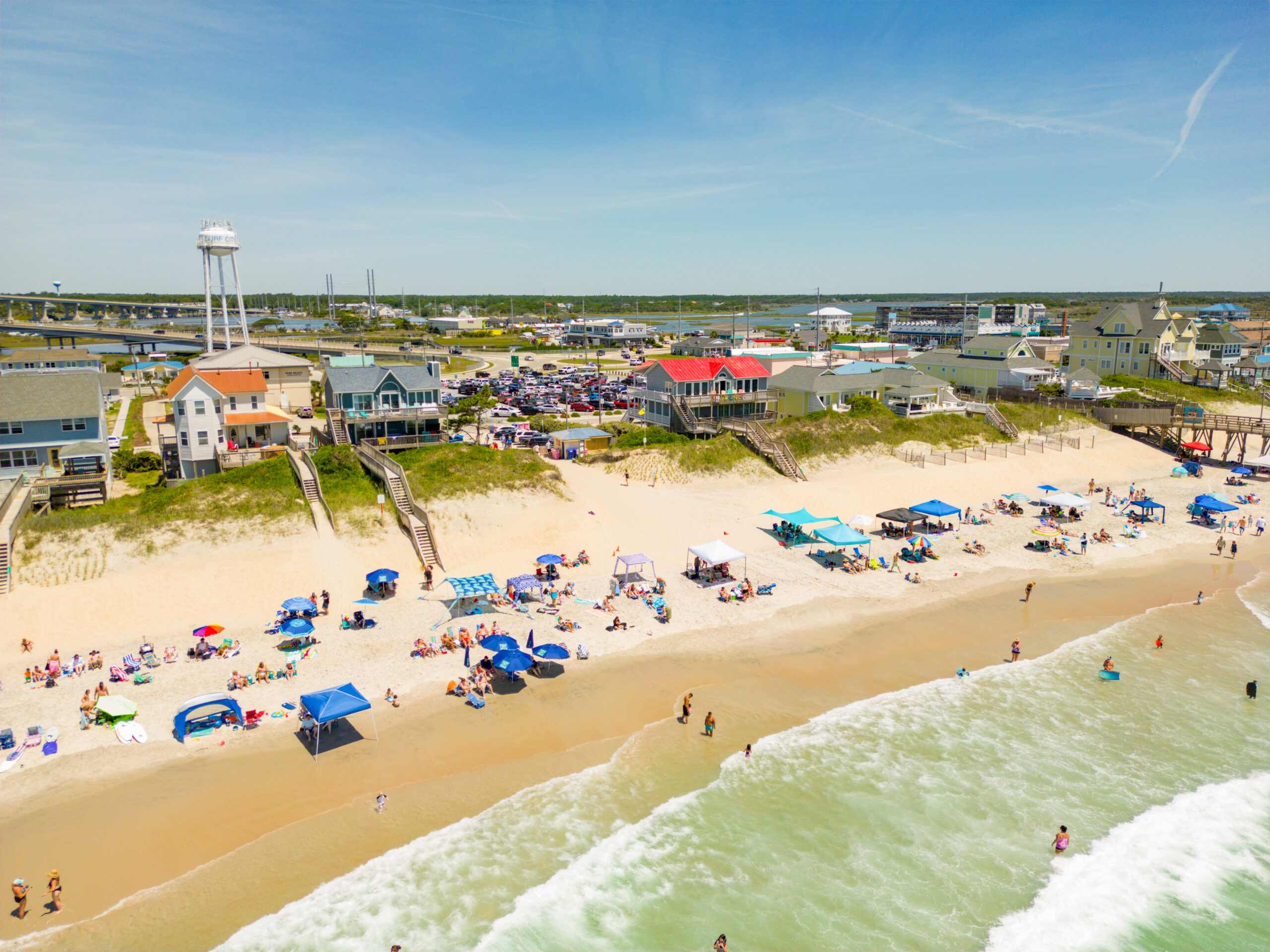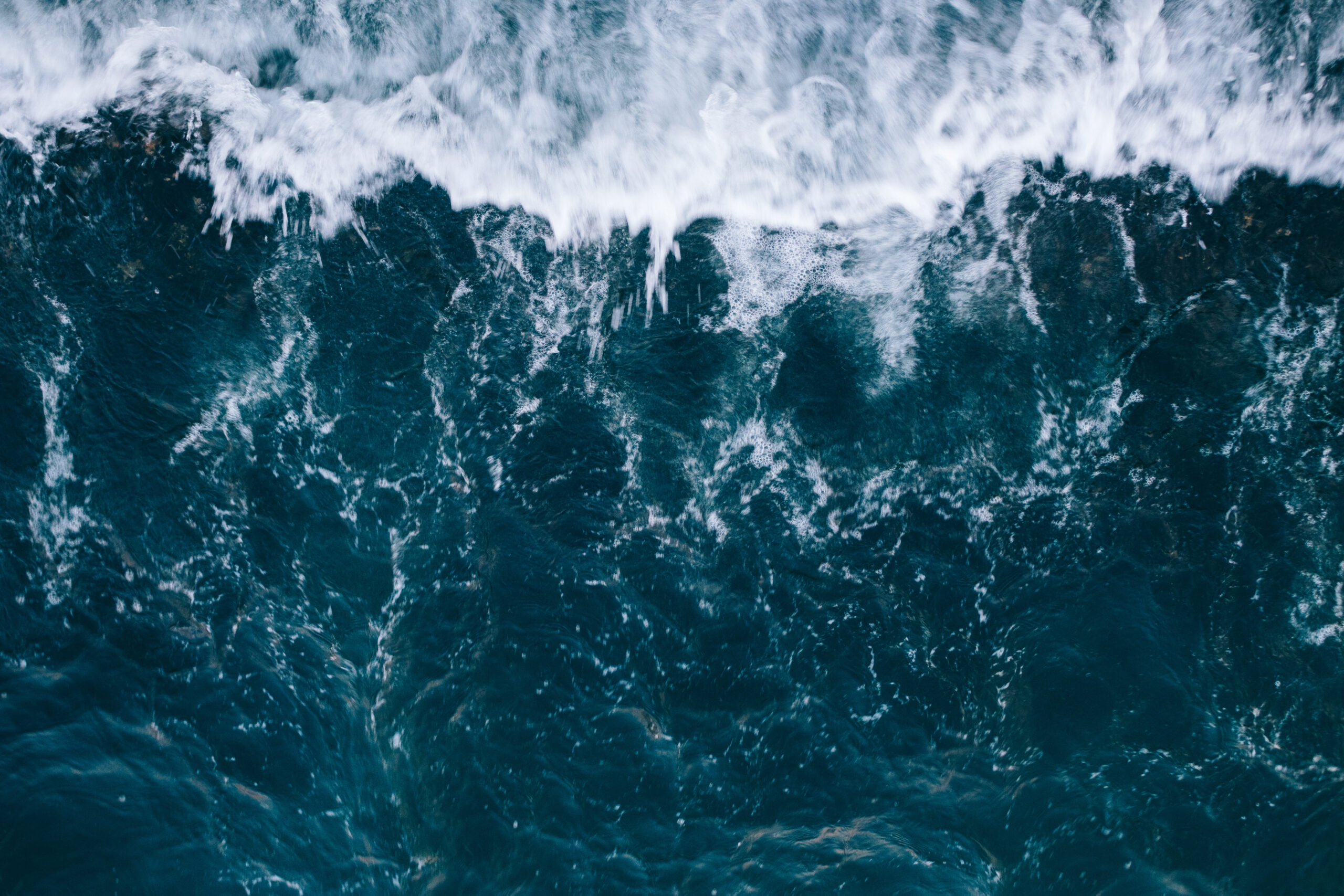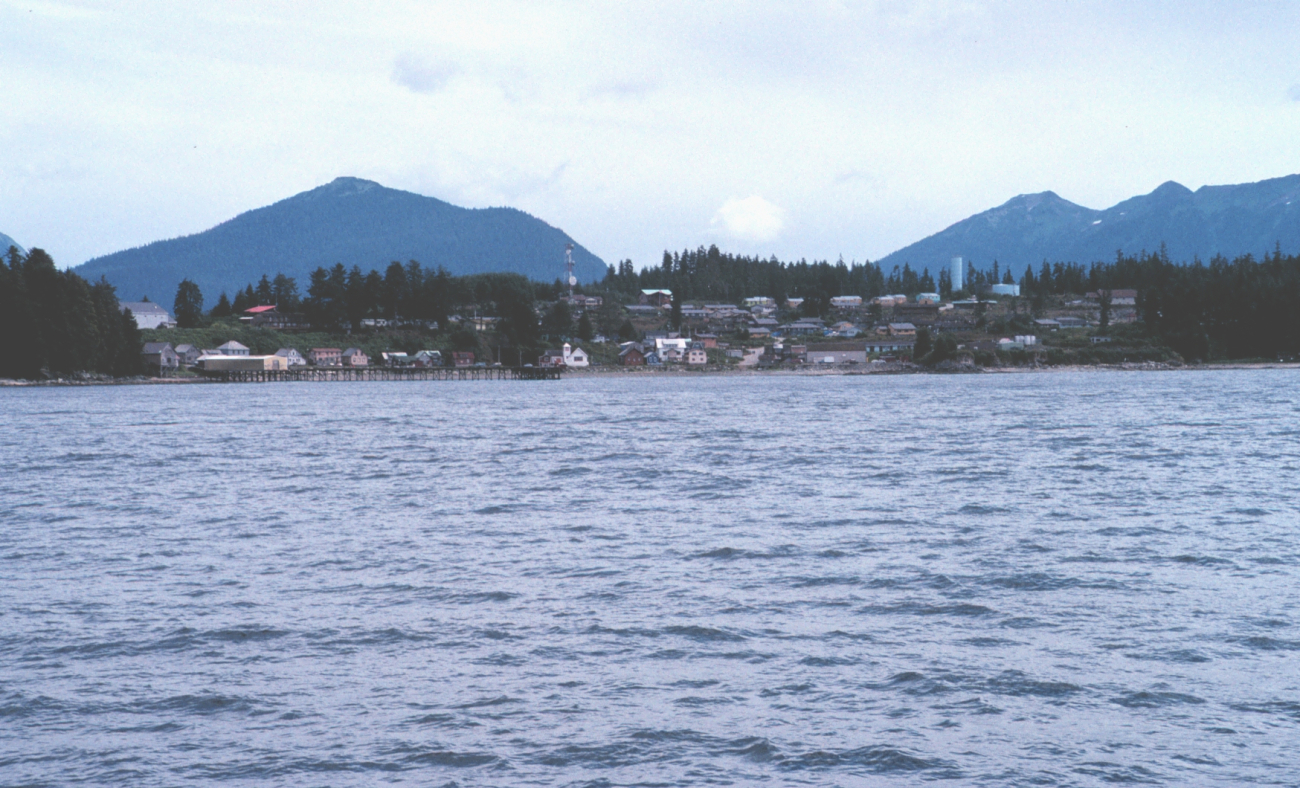Take It Outside: Wet and Wild Coastal North Carolina

Question: What might visitors opt to do while on vacation in coastal North Carolina?
A. Soar like a bird.
B. Dive like a fish.
C. Howl like a wolf.
D. All of the above.
Answer: All of the above.
Indeed, variety is the essence of the coastal experience for visitors who want to observe nature, and be part of it; to learn about it, and from it.
Lucky for them, a growing number of nature-based tourism opportunities complement traditional leisure activities that have drawn tourists for decades to North Carolina’s renowned sun-drenched beaches, fishing meccas and bird-watching vistas.
“North Carolina’s coastal woods and waters are full of opportunities for ecotourists,” says Jack Thigpen, North Carolina Sea Grant extension director. “The diversity of wildlife and plants, together with small waterfront communities, make for a wonderful experience. Increasing tourism also is creating business opportunities for local entrepreneurs.”
Here and globally, communities and businesses are embracing ecotourism principles that promote responsible activities in and with nature, build environmental and cultural awareness and respect for natural resources, and provide financial benefits for local people and conservation efforts.
It’s a good bet that coastal ecotourism makes a significant contribution to the state. The N.C. Division of Tourism, Film and Sports Development’s overall 2010 economic report says:
“Visitors traveling to and within the state of North Carolina spent a record $17 billion in 2010, supporting more than 40,000 North Carolina businesses and directly supporting 183,900 jobs all across the state. State and local tax revenues generated as a result of visitor spending totals more than $1.5 billion annually. North Carolina ranks as the 6th most visited state in the United States.”
TAKE IT OUTDOORS
It’s encouraging to note that a recent study by The Outdoor Foundation shows that more Americans participated in outdoor recreation activities in 2011 than in the past five years. Birding, running, biking, fishing and paddling were among the activities reported.
Many coastal communities are responding to the trend toward active lifestyles by developing recreation facilities that include hiking trails and dockside entry for kayaks and canoes. The Brunswick County Nature Park, for example, has 900 acres with miles of hiking trails through pristine woodlands. Floating docks enable up to four canoes or kayaks at a time to easily slip into the placid black waters of Town Creek.

“Nothing beats the stealthiness of kayaking and canoeing for wildlife and birding in out-of-the-way, backwater habitats,” Thigpen points out.
On the other hand, he says, birding is a portable pastime that is enhanced by a love for the outdoors, a pair of binoculars, and a bird identification book, such as a copy of The North Carolina Birding Trail Coastal Plain Trail Guide.
The North Carolina Birding Trail connects birders with more than 100 birding sites east of Interstate 95 and the communities in which they are found. The driving trail’s website, www.ncbirdingtrail.org, also links visitors to local businesses to help support and stimulate local economies.
“Many new kinds of ecotourism businesses are springing up along the coast. In some cases, watermen are testing the waters for new opportunities by offering inshore naturalist trips or offshore pelagic bird-watching explorations,” Thigpen adds.
SOAR LIKE A BIRD
For adventure-seeking visitors with an urge to fly like a bird, there is Kitty Hawk Kites, a popular Outer Banks adventure recreation hotspot. After proper flight-school instructions, a tourist can trek with a guide to the top of Jockey’s Ridge State Park, strap on hang-gliding gear, and soar with gulls and hawks high above the 420-acre sand dune system, the tallest of its kind in the eastern United States.
When John Harris and his business partner, Ralph Buxton, launched Kitty Hawk Kites in 1974, the Outer Banks was a mere blip on the national tourism radar screen. Recreational fishing, seasonal hunting and beachcombing at the Cape Hatteras National Seashore were the main attractions for visitors.
“Frankly, a lot of people thought we were a bit crazy and that the business wouldn’t last long,” Harris recalls. “Not a lot was going on out here. In fact, the area was pretty impoverished.”
Nevertheless, Harris was inspired by a photo he had seen in the Winston-Salem Journal of someone hang gliding off Grandfather Mountain. Soon after, his mailorder hang glider arrived.
“We assembled it and took it to Jockey’s Ridge and ran up and down the ridge until we figured out the art of taking off,” he says.

It took a bit longer for the business to take off. State improvement projects were instrumental in the Outer Banks becoming a year-round tourist destination, Harris says.
While most visitors are from out of state, roadways, bridges and ferries now bring significantly more North Carolinians from the Triangle, Triad and Charlotte areas.
As Outer Banks tourism has grown, so has Kitty Hawk Kites. Today, the franchise boasts expanded flight training and hang gliding services at Jockey’s Ridge and the Wright Brothers National Memorial. Kayak ecotours, parasailing, surfing and paddleboard lessons are offered at several locations. Harris partners with other local entrepreneurs to help market ecotourism ventures that range from dolphin-watching boat tours to guided Segway tours at a wild mustang preserve in Corolla.
Harris says hang gliding remains his true passion. “You can work the kite to catch a thermal lift — an exhilarating experience. You feel connected to nature and that moment in history when the Wright Brothers took flight a short distance from here. The wind and water work together to form Jockey’s Ridge, the perfect platform for flight.”
The take-home message for Kitty Hawk Kites patrons is simple, Harris says. “Our natural resources are incredible and wonderful. We need to enjoy them, respect them and protect them from negative impacts.”
TEACHABLE MOMENTS
Further south, in the waters surrounding Cape Lookout National Seashore, you’re likely to find Capt. Jess Hawkins aboard his boat, Lucky Dog. He’ll be doing what he loves best — helping visitors discover the natural treasures of the Crystal Coast.
Hawkins, a marine biologist by vocation and avocation, launched Crystal Coast Ecotours out of Morehead City three years ago after a 30-year career with the N.C. Division of Marine Fisheries. During peak summer months, most of his passengers are out-of-state vacationers. Many return each season to the same rental properties and further adventures aboard Lucky Dog.

Each excursion is unique, he says, because of daily and seasonal changes that occur in a variety of aquatic habitats — sea grass meadows, backwater sounds and marshes.
One thing that does not change is the excitement of his passengers when they spot dolphins surfacing nearby. During summer months, dolphins lead their young into the backwater fisheries nursery area where food is abundant and predators are scarce.
Another sure hit for Hawkins’ passengers is seeing the wild horses that roam on Shackleford Banks, a secluded barrier island that is part of the Cape Lookout National Seashore. The horses are said to be descendants of horses brought to the New World by Spanish explorers.
Hawkins also provides hands-on teachable moments through clamming, crabbing, and pulling seine nets through the shallow brackish waters.
“The nets yield a multitude of surprises even for an old marine biologist like me. Seeing the joy of discovery — that aha moment — on our passengers’ faces makes this a very fulfilling adventure,” Hawkins asserts.
HOWL LIKE A WOLF
Hawkins also evokes “aha moments” at the nearby Pine Knoll Shores Aquarium, where he shares his knowledge of marine biology as an instructor for various programs.
Terri Kirby Hathaway, Sea Grant marine education specialist, believes informal educational programs, such as those offered at the state’s three aquariums, are wonderful ways to “extend” the aquarium experience.

“Visitors observe a simulated environment at the aquariums, then gain a deeper understanding and appreciation for the environment through a hands-on nature experience,” Hathaway points out.
Like the aquariums, most North Carolina state parks, coastal reserves and national wildlife refuges offer self-guided tours, as well as structured programs.
“Self-guided walks are meaningful and visitors take away an appreciation for the beauty and diversity in nature. With structured programs, visitors are guided by someone who knows what is there, what to look for, and even what to listen for,” Hathaway explains.
“With birds, you usually hear them before you see them. I’ll tell you this — the great blue heron makes a gosh-awful noise. It’s one that makes a lasting impression and stays with you as a great take-home experience,” she says with conviction.
At Alligator River National Wildlife Refuge, staff members offer a unique experience — the chance to gather around a campfire at nightfall, learn about the comeback of the endangered red wolf and participate in a “howling.”
Hathaway even appreciates the informal educational value of a solitary walk on the beach. As a founding member of Beachcomb Alliance International, she knows that these walks are more than collecting shells, sea glass or sea beans. Rather, each discovery is a clue to the history, geology and biology of the region.
BEACHCOMB FOR SCIENCE
Beachcombing often is the gateway to a lifelong commitment to being a citizen scientist.
Such is the case for Jo O’Keefe, a Brunswick County resident with a love for all things coastal. She moved to the county in 2002 with a camera and a determination to learn as much as she could about her new surroundings.
Early on, she was captivated by the biodiversity of Bird Island, in the N.C. Coastal Reserve system. The living laboratory became her classroom, photo studio and connection to many university marine science researchers.
These days, she turns her keen eye to Sunset Beach, timing her walks along the shoreline during an ebbing tide. O’Keefe looks for aberrations in the wet sand near the water’s edge — a triangle impression in the sand turns out to be a colorful whelk; a mounded impression, a moon snail. She places each live find in a bucket of seawater.

“The beach is different every day. I never get tired of it,” she says, scooping up a whelk egg case and shaking it to hear the sound of miniscule shells inside.
She often becomes a “Pied Piper” of sorts, engaging vacationing families in the pursuit of beach treasure. At the end of a typical walk, she “reviews” the contents of her bucket and may ask someone in the group to return the live animals to the sea. Then, she’ll hand empty containers to the children in the group, telling them, “I taught you how to be a naturalist, now you can do it on your own.”
O’Keefe takes some discoveries home in small containers for further study and classification. Others are captured with her camera for posting on a website filled with her nature photography. Along with the images, O’Keefe provides interesting environmental information.
She believes that the more people learn about and are engaged in coastal ecology, the more likely they will become partners in protecting it.
DIVE LIKE A FISH
The dive team at Scuba-Now in Wilmington has a similar philosophy. The mission of the training and dive center is to make scuba diving safe and affordable, and to turn the world’s dive population into ocean protectors.
“We have seen an increase in scuba diving. New technology and the lower cost of gear help promote the sport,” says Pete Watkins, a dive master and underwater photographer.
The center certifies about 800 divers annually through rigorous training programs that include class time and pool time before students graduate to an actual dive. About a quarter of the Scuba-Now students are from outside the Wilmington area, according to Inman Campbell, shop manager and boat captain.

Scuba-Now operates four vessels, including a newly acquired 40-foot boat that can hold up to 20 divers, Campbell says.
“There’s definitely a learning curve to master,” says J.D. Williams, operations manager and dive master. “You are dealing with strong currents and visibility issues. We preach safety and knowing your limits. We also preach conservation — look but don’t touch, especially when it comes to coral. Once you master the art of buoyancy, you can fly underwater and keeping away becomes easier.”
The most popular dive sites for that company are several offshore artificial reefs. Skilled divers prefer a ledge 100 feet deep off Carolina Beach where fossilized teeth of megalodon — the giant shark that lived millions of years ago — are found in abundance.
Underwater photographers find countless colorful subjects on dives near Frying Pan Shoals Light Tower, where many tropical and subtropical fish species cluster, Watkins says.
“I have taken photos of neon goby, French angel fish, and too many lionfish to count. The underwater world is amazing. You feel like a pioneer discovering a new world. At the same time, the shipwrecks give you a glimpse into history,” Watkins adds.
HISTORY MEETS ECOLOGY
Climb aboard the Wilmington with Capt. Doug Springer at the helm. The state-of-the-art, custom-built catamaran is the flagship of Wilmington Water Tours, an ecotour venture that Springer operates with his wife Diane and business partners Garland Valentine and Mary DeLollo.
Springer’s favorite cruise offering is a black water adventure into the upper reaches of the northeast Cape Fear River. The tour merges history and ecology with tales of Colonial settlements, thriving rice plantations, geology and important wildlife habitat.

“Before there was an Interstate 40,” Springer reminds the mostly out-of-state passengers, “there was the Cape Fear River. It still is a strong economic engine for the region.”
Three miles up the river, a colony of osprey has returned for the new nesting season. In 2011, there were more than 20 nests, with up to three chicks per nest. “They have plenty to eat since menhaden fish populations began to rebound,” he explains.
Springer slows the Wilmington to point out a sudden change in the shoreline. “That’s the Cape Fear Mountain — a geological uplift that occurred tens of thousands of years ago. It forms the basis for the Castle Hayne aquifer that runs from Wilmington to New Jersey.”
Springer, a former Cape Fear riverkeeper, has a clear message for all passengers: “This is your river. Learn to use it. Learn to take care of it. It’ll be your river forever.”
A recent middle-school field trip ended with a lively round of questions and answers. The session concluded when a student asked if he could say something. Springer nodded consent. And, on cue, all the students stood up and said in unison: “It’s our river.”
North Carolina Tourism Tidbits
The following is a sampling of ecotourism opportunities available along North Carolina’s coast:
• N.C. Division of Tourism, Film and Sports Development website has information about North Carolina’s coast and beaches: www.visitnc.com.
• N.C. Division of Parks and Recreation page has details about park locations and programs: www.ncparks.gov.
• U.S. Fish and Wildlife Service’s website has information about visiting wildlife refuges: www.fws.gov.
• National Parks Service lists coastal sites in North Carolina: www.nps.gov.
• N.C. Aquariums organizes summer camps for kids: www.ncaquariums.com.
• N.C. Birding Trail Official Guide website has trail guides and resources: www.ncbirdingtrail.org.
• N.C. Paddle Trail Association has maps.
• Coastal nature photography and information: www.okeefes.org.
• Scuba-Now information: www.scubanow.com.
• Ecotours with Capt. Jess Hawkins: www.crystalcoastecotours.com.
• Ecotours with Capt. Doug Springer: www.wilmingtonwatertours.com.
• Kitty Hawk Kites history and services: www.kittyhawk.com.
• Beachcomb Alliance International: www.beachcomballiance.org.
• 2012 Beachcombers Conference: www.beachcombingconference.com.
This article was published in the Summer 2012 issue of Coastwatch.
For contact information and reprint requests, visit ncseagrant.ncsu.edu/coastwatch/contact/.
- Categories:


